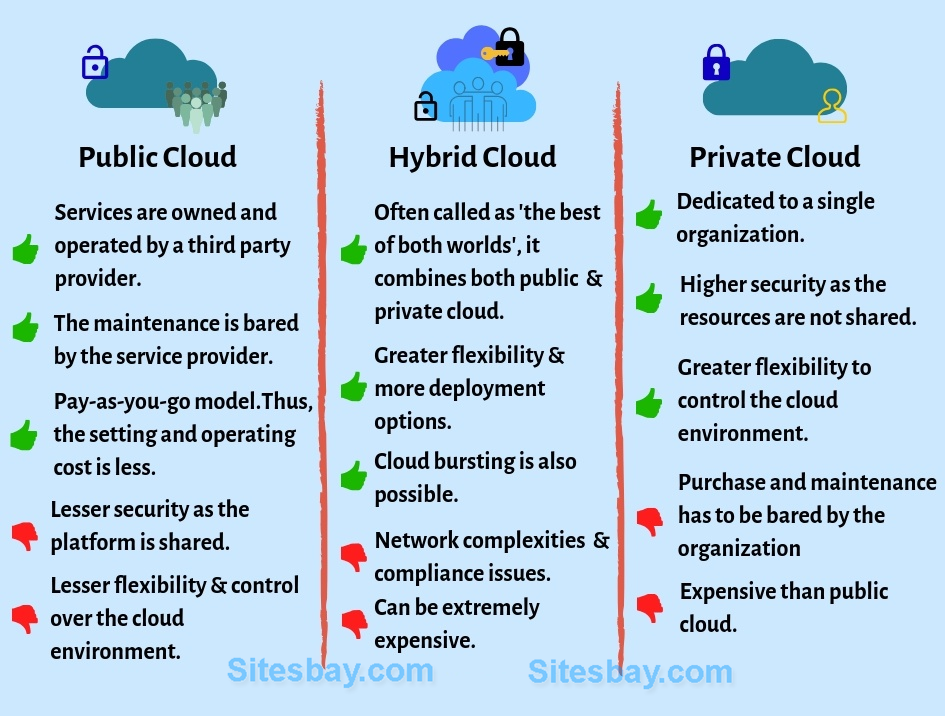Private Cloud Vs Public Cloud
Difference Between Private Cloud and Public Cloud
In public cloud, the cloud infrastructure is made available to the general public, Private cloud can be managed by the organization or a third party.
Public Cloud vendors offer a range of IT services and resources accessible to anyone who subscribes and pays for them. It's a type of external cloud which is made available for the use of public and is essentially owned and provided by the external organizations. e.g. Amazon Web Services, Microsoft Azure and so on.It's a type of external cloud which is made available for the use of public and is essentially owned and provided by the external organizations. e.g. Amazon Web Services, Microsoft Azure and so on.
Private Cloud Here infrastructure or services can be located on-premise or off-premise and is operational solely for the use of a single organization which would be the owner of the cloud. All cloud configurations are directly influenced by the owner. It can be managed by the organization itself or can also be outsourced to any third party.
Difference Between Private Cloud and Public Cloud

strong>Public Cloud: Single tenancy: there’s only the data of a single organization stored in the cloud. Anyone can use the public cloud services.
strong>Private Cloud: Multi-tenancy: the data of multiple organizations in stored in a shared environment. Only the organization itself can use the private cloud services.
| Public Cloud | Private Cloud |
|---|---|
| Anyone can use the public cloud services. | Only the organization itself can use the private cloud services. |
| Data Center Location Inside the organization’s network. | Data Center Location Anywhere on the Internet where the cloud service provider’s services are located.. |
| Cloud Service Management: The organization must have their own administrators managing their private cloud services. | Cloud Service Management: The cloud service provider manages the services, where the organization merely uses them. |
| Hardware Components: Must be provided by the organization itself, which has to buy physical servers to build the private cloud on. | Hardware Components: The CSP provides all the hardware and ensures it’s working at all times. |
| Expenses: Can be quite expensive, since the hardware, applications and network have to be provided and managed by the organization itself. | Expenses: The CSP has to provide the hardware, set-up the application and provide the network accessibility according to the SLA. |
| In public cloud, the cloud infrastructure is made available to the general public over the internet and is owned by a cloud provider and in a private cloud, the cloud infrastructure is exclusively operated by a single organization. | Private cloud can be managed by the organization or a third party and may exist on-premise or off-premise. |
| AWS, Microsoft Azure, IBM's Blue Cloud and Sun Cloud are the examples of public cloud | AWS and VMware are the examples of private cloud. |

